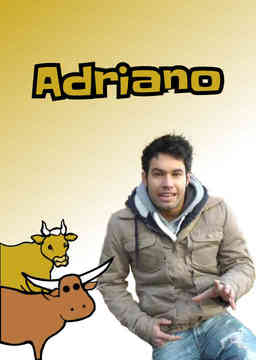









Difficulty:
 Adv-Intermediate
Adv-Intermediate
Italy Sicilian
Palermo faces the sea and has a very long history of immigration. The narrator interviews a young woman whose great grandfather came to Sicily from Sudan. She is involved in educating immigrants from Africa and Asia. Pitrè was also highly involved in education.
Difficulty:
 Adv-Intermediate
Adv-Intermediate
Italy Sicilian
Giuseppe Pitrè loved attending performances of chivalric folk plays in Palermo. This segment follows a marionette player at Palermo's Opera dei Pupi, the same theater where Pitrè went to see folk epics.
Difficulty:
 Adv-Intermediate
Adv-Intermediate
Italy Sicilian
A woman performs a traditional Sicilian ritual involving the sticking of pins into an onion, accompanied by prayers, in order to bring back the boyfriend of her suppliant.
Difficulty:
 Adv-Intermediate
Adv-Intermediate
Italy Sicilian
Giuseppe Pitrè received his degree in medicine in 1865. His patients, among Palermo's poorest, provided him with a wealth of ethnographic material.
Difficulty:
 Adv-Intermediate
Adv-Intermediate
Italy Sicilian
The segment concentrates on the richness of the Sicilian dialect, a dialect which is less and less spoken. The narrator interviews two poets who recite their works in Sicilian, providing insights into the language.
Difficulty:
 Adv-Intermediate
Adv-Intermediate
Italy Sicilian
Saint Rosalia (1130–1166), recognized by her crown of roses, is Palermo's patron saint. The video shows the July 14 parade in honor of the saint, and a young man who credits his cure from a grave illness to Saint Rosalia.
Difficulty:
 Adv-Intermediate
Adv-Intermediate
Italy Sicilian
Pitrè's mission was to conserve and safeguard the traditions of his people, the Sicilians, and to keep the roots alive. Looking at religious traditions is one important way to do this.
Difficulty:
 Adv-Intermediate
Adv-Intermediate
Italy Sicilian
This segment focuses on an actor who retells and acts out stories from Sicily's past, speaking in Sicilian dialect. He uses the Pitrè Museum as a source for material. The museum houses a manuscript with over 4,000 Sicilian proverbs, just one of the many volumes of Sicilian ethnographic material.
Difficulty:
 Adv-Intermediate
Adv-Intermediate
Italy Sicilian
Pitrè's life was marked by a sort of travelling storyteller tradition in his family. In those days, a cuntastorie (storyteller) would go around to all the piazzas and tell stories, and people would pay to hear them.
Difficulty:
 Adv-Intermediate
Adv-Intermediate
Italy Sicilian
In this segment, we see some swordfish harpoon fishing, and hear an old Sicilian legend about a boy named Nicola who could stay underwater for a very long time.
Difficulty:
 Adv-Intermediate
Adv-Intermediate
Italy Sicilian
We learn about Pitrè's life, and his relationship to the sea.
Difficulty:
 Adv-Intermediate
Adv-Intermediate
Italy Sicilian
Giuseppe Pitrè was an ethnologist who collected documents pertaining to Sicily and its culture and traditions. His work is the basis for this documentary, which unites live footage, drawings, and archival documents.
Difficulty:
 Adv-Intermediate
Adv-Intermediate
Italy
The Naples soccer team is the most popular team in Southern Italy, having won a very high number of games. They have an estimated four million fans worldwide, many of whom come to this shop to buy jerseys.
Difficulty:
 Adv-Intermediate
Adv-Intermediate
Italy Sicilian
Catena and Agata relax in the garden of Agata's baglio [Sicilian architectural form with buildings arranged around a courtyard]. They're getting ready to cook typical Sicilian dishes that Catena will include in a cookbook she's writing.
Difficulty:
 Adv-Intermediate
Adv-Intermediate
Italy
That's Italy allows us to discover different aspects of Italian style. This first episode features Basilicata, a region offering places of astonishing beauty that few know and few appreciate.
Are you sure you want to delete this comment? You will not be able to recover it.